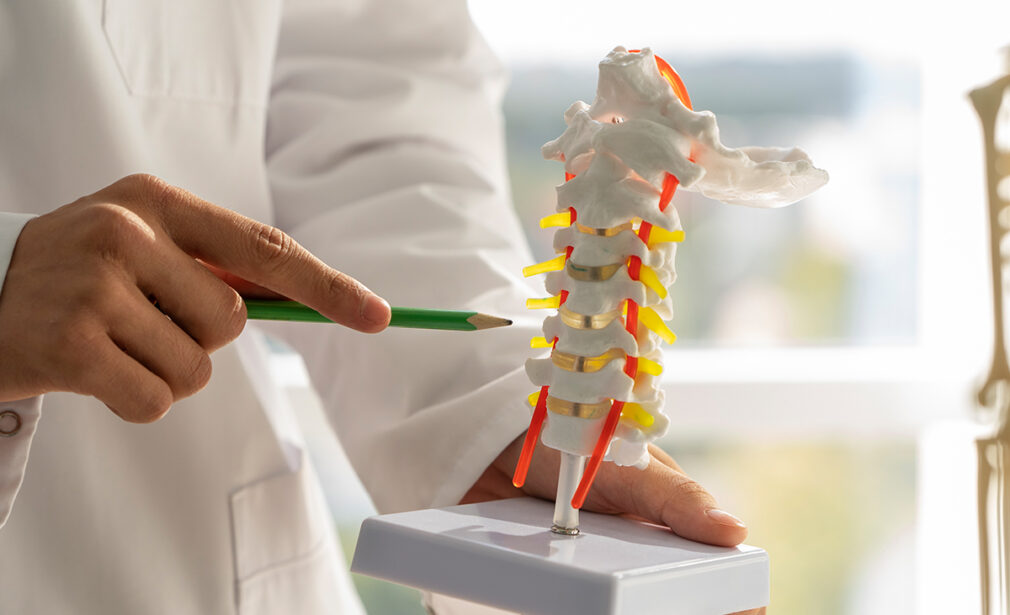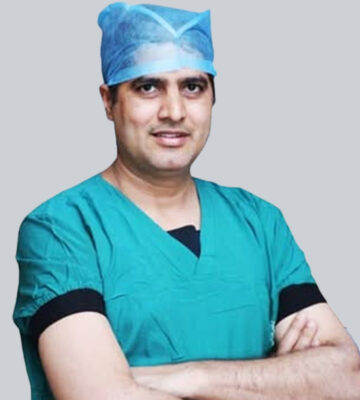Joint Replacement & Spine Surgery
Vasundhara Hospital is consist of highly skilled orthopedic surgeons focusing to get you back on your feet. The Joint Replacement and Spine department is providing empathetic & innovative medical care and it is managed by the team of Orthopedics Surgeon and Spine Specialist having extensive years of experience in dealing the criticalpatients with Joints & spinal conditions.
Joint Replacement department is specialized in Arthroplasty, ‘The surgical reconstruction or replacement of a Joint’. The department performs surgical procedures which include the most current arthroscopic and reconstructive techniques including major joint replacements. The Centre is manned by experienced and highly skilled Orthopedic doctor that offer MIS solutions for Total Knee replacement, Hip Resurfacing, Hip replacement, Unicondylar ( Partial) Knee Replacement Surgery as well as Replacement of Shoulder and Elbow joints.
Working with empathetic approach, our Spine Specialist recommend surgery as a treatment option for spinal problems after several months of all other treatment, which fail to provide any relief to the patient’s back pain and other related spine problems. There are different kinds of spinal surgeries that the doctors may recommend after thoroughly assessing your health condition.
Why Choose us
Vasundhara Hospital is well equipped with advanced medical equipment’s and the team of highly experienced surgeon with more than 3000 TKR including Revision Total Knee Replacement backed up by computer navigation and imaging equipment.
What We Offer
- Knee Replacement
- Hip Replacement
- Arthroscopic procedures
- Rehabilitation Programs
- Shoulder, elbow, ankle Replacement
- Limb salvage surgeries
- Bone Tumor Surgeries
- Correctional procedures for deformities
- Post-surgery services
- All problems related to Spine
- Cervical Pain
- Back pain & Lumbar spondylosis
- Sciatica
- Vertigo
Rates For Orthopaedic Implants
| Sl. No. | Orthopedic knee Implant system | Component | Feature/Material of the knee implant | Units (In Number) | Ceiling Price (In Rs.) |
|---|---|---|---|---|---|
| 1. | Primary knee replacement system | Femoral component by whatsoever name/specification | Titanium alloy (all variants) coated | 1 | 40,677 |
| 2. | Primary knee replacement system | Femoral component by whatsoever name/specification | Oxidized zirconium (OxZr) alloy (all variants) | 1 | 40,677 |
| 3. | Primary knee replacement system | Femoral component by whatsoever name/specification | Tibial component or Tibial tray by whatsoever name/specification | 1 | 27,153 |
| 4. | Primary knee replacement system | Femoral component by whatsoever name/specification | Tibial component or Tibial tray by whatsoever name/specification | 1 | 25,294 |
| 5. | Primary knee replacement system | Tibial component or Tibial tray by whatsoever name/specification | Titanium alloy (& it's all variants) coated | 1 | 25,494 |
| 6. | Primary knee replacement system | Tibial component or Tibial tray by whatsoever name/specification | Oxidized zirconium (OxZr) alloy | 1 | 25,494 |
| 7. | Primary knee replacement system | Tibial component or Tibial tray by whatsoever name/specification | Cobalt chromium (CoCr) alloy & other than at Serial no 5 and 6 | 1 | 17,808 |
| 8. | Primary knee replacement system | Articulating surface or Insert by whatsoever name/specification | Any Material | 1 | 10,027 |
| 9. | Primary knee replacement system | Patella by whatsoever name/specification | Any Material | 1 | 4,294 |
| 10. | Primary knee replacement system | Component having Tibial tray and Insert combined as single unit by whatsoever name/specification | Polyethylene or crosslinked polyethylene or highly crosslinked polyethylene or any other material | 1 | 13,324 |
| 11. | Primary knee replacement system | Components having Tibial Tray and Insert combined as single unit by whatsoever name called | Tibial: Metallic Insert: Polyethylene or Polyethylene or Cross-linked polyethylene or highly cross-linked Polyethylene or any other material | 1 | 27,873 |
| Revision | |||||
| 12. | Revision Knee Replacement system | Femoral Component by whatsoever name/specification | Any material | 1 | 65,908 |
| 13. | Revision Knee Replacement system | Tibial component or Tibial Tray by whatsoever name/specification | Any material | 1 | 32,781 |
| 14. | Revision Knee Replacement system | Articulating surface or Insert by whatsoever name/specification | Any material | 1 | 16,663 |
| 15. | Revision Knee Replacement system | Patella by whatsoever name/specification | Any material | 1 | 4,294 |
Meet Vasundhara Hospital's Joint Replacement Expert
Frequently asked questions
Accordion Content
Orthopedicians treat a vast array of musculoskeletal conditions, including but not limited to:
- Fractures: Broken bones throughout the body (e.g., arm fracture, leg fracture, hip fracture).
- Sprains and Strains: Injuries to ligaments (sprains) and muscles or tendons (strains), such as ankle sprains or hamstring strains.
- Arthritis: Various forms of joint inflammation, including osteoarthritis (wear and tear), rheumatoid arthritis (autoimmune), and gout. They manage the pain and functional limitations caused by arthritis.
- Back and Neck Pain: Conditions like herniated discs, spinal stenosis, sciatica, and general backaches and neck pain.
- Shoulder Problems: Rotator cuff tears, dislocations, frozen shoulder, and impingement syndrome. For example, difficulty lifting your arm could be due to a rotator cuff issue.
- Elbow, Wrist, and Hand Issues: Carpal tunnel syndrome, tennis elbow (lateral epicondylitis), golfer’s elbow (medial epicondylitis), and trigger finger. Numbness in your fingers might be a sign of carpal tunnel syndrome.
- Hip Problems: Bursitis, labral tears, and hip impingement. Pain in your groin or outer hip could indicate a hip issue.
- Knee Problems: Ligament tears (ACL, MCL, PCL), meniscus tears, patellar tendonitis, and kneecap dislocations. A twisting injury during sports could lead to an ACL tear.
- Foot and Ankle Problems: Plantar fasciitis, bunions, hammertoes, Achilles tendonitis, and ankle instability. Heel pain that is worse in the morning is a common symptom of plantar fasciitis.
- Sports Injuries: A wide range of injuries sustained during athletic activities.
- Congenital Deformities: Conditions present at birth affecting the musculoskeletal system, like clubfoot or scoliosis.
- Bone Tumors and Infections: Though less common, orthopedicians also manage these conditions.
You should consider seeing an orthopedician if you experience any of the following:
- Persistent or severe pain in your bones, joints, or muscles that doesn’t improve with home care.
- Limited range of motion or difficulty moving a joint.
- Swelling, redness, or warmth around a joint.
- Deformity of a bone or joint.
- Numbness or tingling in your arms, legs, hands, or feet.
- Instability of a joint (feeling like it might give way).
- Difficulty performing daily activities due to musculoskeletal pain or limitations.
- A sports injury that is not improving.
- Review your medical history: They will ask about your current symptoms, past injuries, medical conditions, medications, and family medical history. Be prepared to provide detailed information about your pain (when it started, what makes it better or worse, its location, etc.).
- Perform a physical examination: This will involve assessing your range of motion, strength, reflexes, gait (how you walk), posture, and palpating (feeling) the affected area. They might ask you to perform specific movements to evaluate your joint function.
- Order imaging tests if needed: Depending on your condition, the orthopedician may order X-rays, MRI scans, CT scans, or other imaging studies to get a better look at your bones and soft tissues. Sometimes, X-rays can be done during the initial visit.
- Discuss treatment options: Based on the evaluation, the orthopedician will discuss possible diagnoses and treatment plans. This might include non-surgical options like physical therapy, medication, injections, braces, or lifestyle modifications. If surgery is a potential option, they will explain the procedure, its risks and benefits, and the expected recovery process.


